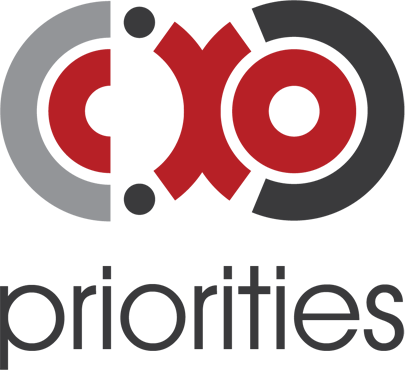In this fast-paced world, SMEs are having to digitally adapt. That’s why Intelligent SME.tech spoke to two experts about how SMEs can ensure they have a solid IT infrastructure, supporting new technologies and the daily running of their business.
Businesses are constantly changing, aligning themselves with new trends, technology and forecasts. Hybrid working and the move to the cloud are two of these growing trends, most businesses – including SMEs – have adopted.
For example, Nutanix, a leader in hybrid multi-cloud computing, and Citrix Systems, are joining forces to help their customers deliver it. The two companies are announcing a strategic partnership through which they will provide secure, on-demand and elastic access to apps, desktops, and data from any device, in any location, at any scale through Nutanix hyperconverged infrastructure (HCI) and hybrid multi-cloud deployments of Citrix DaaS and Virtual Apps and Desktops services.
“Organisations continue to look for IT solutions to support the agility, flexibility and reliability required for a hybrid workforce,” said Tarkan Maner, Chief Commercial Officer at Nutanix.
Hector Lima, Executive Vice President and Chief Customer Officer, Citrix, added: “In strengthening our partnership, Citrix and Nutanix can deliver the right building blocks for customers to make the transition successfully and reap the benefits it can provide in attracting and retaining talent, scaling operations, and creating competitive advantage.”
Intelligent SME.tech spoke to two leading industry experts about this transition to digital infrastructure. They detail how the future of technology affects small and medium-sized businesses and give advice on how to make that transition comfortably if businesses haven’t already.
Will Drysdale, APAC Sales Manager, ActiveCampaign
Too small – or busy – to devote time and headspace to the hardware and systems you use to run your business? You’re far from alone. Small business owners typically wear half a dozen hats at once and it’s easy for more pressing concerns to take precedence, particularly in today’s interesting times.
Persistently prioritising other issues is part of the reason why many of Australia’s two million-odd small businesses have been behind the eight ball historically when it comes to all things technology.
Research commissioned by GoDaddy found that 59% of enterprises with fewer than 20 employees didn’t even have their own websites! While traditional shoebox accounting may be on the way out, plenty of SME owners continue to muddle along with spreadsheets and ring binders, rather than face the perceived pain associated with upgrading. Despite the fact that a modern cloud-based solution would serve their business so much better.
Lagging behind with the other Luddites may have been OK in the pre-COVID era but it’s becoming an increasingly risky approach in late 2021. That’s because the pandemic has accelerated the pace of digitisation across the country and the globe, triggering what some business commentators have described as a decade’s worth of transformation in a year.
Businesses that have the technology infrastructure in place to allow them to operate flexibly, remotely and efficiently have enjoyed a significant competitive advantage over those that continue to plod along in analogue mode.
If your business is in the latter category, getting your high-tech house in order, by investing in migrating core applications to the cloud, deploying leading-edge robust security and working with a specialist IT services provider, won’t just deliver a welcome productivity dividend here and now.
It will make it easier for you to embrace new solutions and technologies, like customer experience automation solutions, that have the potential to transform your operations across the board. That will, in turn, help you keep up with your competitors at the top end of town, as they identify new ways to optimise their operations and deliver satisfying, personalised and memorable customer experiences at scale.
As Australia moves closer to the mass vaccination targets that will see our society and economy re-open for business, ensuring you have the technology infrastructure you need to succeed has never been more important.
Don Boxley, CEO and Co-Founder, DH2i
SMEs, like their enterprise counterparts, understand that you can’t skimp when it comes to building a solid IT infrastructure. Doing so would inevitably result in significant issues that could seriously compromise an organisation’s ability to conduct business successfully and safely.
Most SMEs know that avoiding an IT investment now may save them a bit today but will likely end up costing them a lot more in the long run. But, without an enterprise-sized IT department and budget, what’s an SME to do?
My first piece of advice would be for the SME to align with a trusted advisor, such as a consultant, VAR, SI, etc. This is akin to having an enterprise-sized IT department that can assist you with anything from a one-off purchase where they provide design, acquisition, deployment and/or training, to an ongoing management and services partnership. Again, while there is certainly an investment that needs to be made in such a relationship, the IT and business benefits, as well as the IT technology investment cost savings, makes it well worth it.
My next piece of advice is to not underestimate the criticality of technology strategies and technology investments that ensure data and services availability and security. No SME wants to face an outage and manage the fallout during business hours, let alone be woken at 2:00 a.m. to deal with it. An outage is painful and expensive – potentially costing thousands per minute of downtime and further impacting intangibles like long-term brand reputation. Likewise, a security breach can cost hundreds of thousands, even millions – especially when ransomware demands are involved; and a cyberattack can also lead to significant legal and regulatory compliance issues, as well as a hit to brand trust.
SMEs that wish to ensure that their business applications will remain operational no matter what happens should look for a ‘smart’ availability solution that enables them to ensure high availability (HA) and manage a variety of heterogeneous Windows and Linux workloads at the instance level-as well as Docker containers. SMEs that wish to ensure seamless and secure, zero trust access to and sharing of data, from anywhere, at any time should avoid VPNs and instead seek a security solution that enables them to build lightweight, scalable and highly secure connections between on-premises, remote, Edge, and/or cloud environments, as well as extend these capabilities to edge and IoT deployments.”
Click below to share this article
